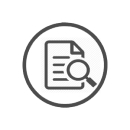2022 Equity Challenge Day 4: Understanding Our Bias and its Consequences
“Not everything that is faced can be changed, but nothing can be changed until it is faced.”
Activist and AuthorBiases are the attitudes or stereotypes that affect our understanding, actions and decisions unconsciously. Everyone has biases, and they are activated involuntarily and without our conscious awareness or intentional control. In fact, our brains are biologically designed to make sense of the world using these quick judgments. Although bias is automatic, with intentional effort, we can learn to change the way we think and challenge the negative or harmful biases we hold.
Bias can be positive or negative. Bias can be dangerous and, when mixed with power and privilege, can create inequitable outcomes for society’s most vulnerable people. Bias does not just sit within people; it is often used as the basis for decision-making and the rationale behind actions that we take. Bias can influence actions that are discriminatory. It can surface and perpetuate into collective conversations when defending harmful actions.
It’s important to not only understand bias as a concept, but to do self-reflection work that uncovers personal biases and learn to develop counter-behaviors. Here are some examples of how bias can result in discrimination and inequitable outcomes:
- Passing someone (or whole groups of people) over for a promotion based on their gender, sex, age, race or parental status.
- Using derogatory “jokes” or slurs about someone’s ethnicity, religion or sexual orientation in the workplace.
- Being hesitant to sell or rent a home to someone based on their disability, race, religion or family status.
These examples show the relationship not only between bias and decisions, but bias and power. Bias is a tool that upholds our current systems of inequity and maintains white supremacy.
White Supremacy is racial power that denotes a system of structural or societal racism that privileges white people over others, regardless of the presence or absence of racial hatred. White racial advantages occur at the collective and individual levels. Both people of color and white people can perpetuate white dominant culture, resulting in the overall disenfranchisement of Black, Indigenous, and other people of color in many aspects of society.
Today you will explore more examples of bias and the relationship between bias and inequitable systems. As you move through the materials, we encourage you to begin reflecting on how bias has shown up in your own life and how your own bias has impacted your decision-making.
TODAY’S CHALLENGE

Read
- Learn how to understand your bias and work to overcome them (10 minutes).
- Read this article to better understand what is meant by bias and how it might look in our daily lives (15 minutes)
- Review this article for an example of how bias can lead to discriminatory actions (8 minutes).

Watch
- Expand your view on how bias influences our understanding of power, privilege and supremacy and shows up in the workplace (12 minutes).
Engage
- Learn about your own unconscious bias by taking a Hidden Bias Test developed by psychologists at Harvard, the University of Virginia, and the University of Washington. Consider the IATs on race, skin tone, or Arab Muslims. (15 minutes)
- Did you notice anything about yourself after taking today’s challenge? Consider sharing this new awareness with a colleague, friend, family member, etc. to deepen your understanding.
Reflect And Share
- How has bias shown up in your life?
- How do your identities and privileges influence your bias? How do areas that you do not experience privilege influence your bias?
- What personal biases do you have that you are aware of?
- Reflect on a time when your bias influenced your decision making. What happened? What was the outcome?
- When you reflected on your bias, what identities came up for you?
- How can you counter your biases?
- What connections do you see between bias and inequity? Bias and injustice?
- What questions do you still have about this week’s topics?



